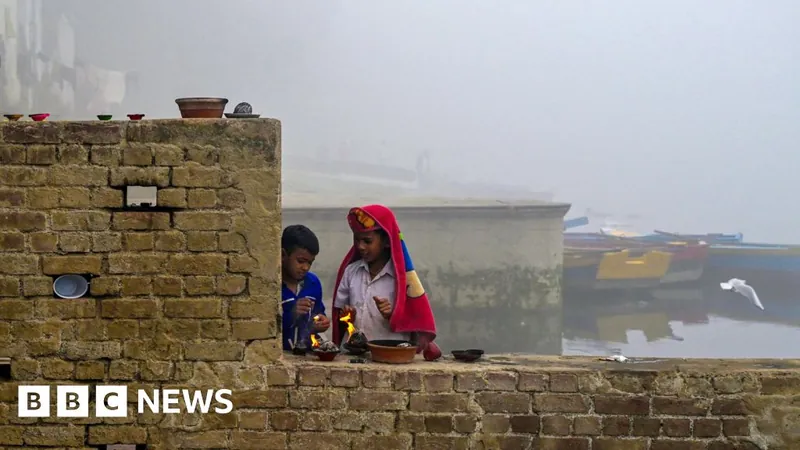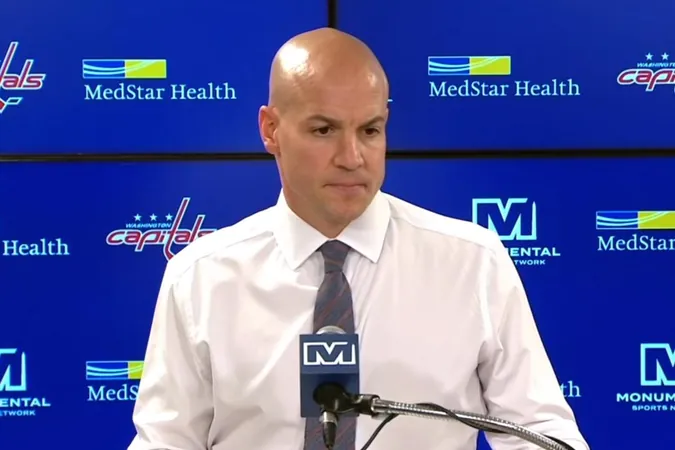
Delhi's Schools Shut Down: The Alarming Truth Behind the Hazardous Smog!
2024-11-14
Author: Wei
Delhi's Schools Shut Down: The Alarming Truth Behind the Hazardous Smog!
In a desperate move to protect the health of its youngest citizens, all primary schools in Delhi have been ordered to close due to a significant deterioration in air quality. Chief Minister Atishi Marlena Singh announced on social media platform X that classes will transition to online formats until the smog crisis is resolved.
The capital, alongside neighboring regions, is currently facing pollution levels that are classified as downright hazardous. On Thursday, the concentration of fine particulate matter surged to a staggering 50 times above the safety threshold set by the World Health Organization (WHO). The air quality monitoring group IQAir reported that Delhi recorded an average of 254 micrograms of PM2.5 particles per cubic meter — well over the WHO's recommended limit of 15.
This year's pollution scare is particularly intense, driven by a perfect storm of factors: a drop in temperatures, rampant crop stubble burning, low wind speeds, and emissions from vehicles all contribute to the seasonal smog that plagues the northern states every winter. Residents have reported a host of health issues related to this thick cloud of toxic air, including eye irritations and respiratory problems.
In a somber study published in The Lancet earlier this year, it was indicated that around 7.2% of daily deaths in Delhi are linked to fine particulate pollution. Children, who are particularly vulnerable to air quality-related health issues, may experience delayed physical and cognitive development due to prolonged exposure to such hazardous conditions.
Further compounding the crisis, neighboring cities like Gurugram and Noida are also grappling with similar air quality crises, and even the city of Chandigarh has not escaped the choking pollution. Authorities have implemented several countermeasures, including banning non-essential construction and spraying dust suppressants on roads, but critics are vocal about the ineffectiveness of these strategies.
Recent satellite images from NASA highlight the extensive reach of this pollution, showing its dark smog blanket sweeping over northern India and stretching into Pakistan. In fact, Lahore was recently forced to close its primary schools due to perilous air quality levels as well.
While authorities express hope for improvements in air quality in the coming days, experts caution that conditions will likely remain at unhealthy levels for an extended period. It remains imperative for citizens and officials alike to take stronger measures to combat the ongoing air pollution crisis, which now poses a serious threat to public health and well-being.
As Delhi's children adapt to virtual classrooms, the question remains: what will it take for effective, long-term solutions to be enacted?





 Brasil (PT)
Brasil (PT)
 Canada (EN)
Canada (EN)
 Chile (ES)
Chile (ES)
 España (ES)
España (ES)
 France (FR)
France (FR)
 Hong Kong (EN)
Hong Kong (EN)
 Italia (IT)
Italia (IT)
 日本 (JA)
日本 (JA)
 Magyarország (HU)
Magyarország (HU)
 Norge (NO)
Norge (NO)
 Polska (PL)
Polska (PL)
 Schweiz (DE)
Schweiz (DE)
 Singapore (EN)
Singapore (EN)
 Sverige (SV)
Sverige (SV)
 Suomi (FI)
Suomi (FI)
 Türkiye (TR)
Türkiye (TR)